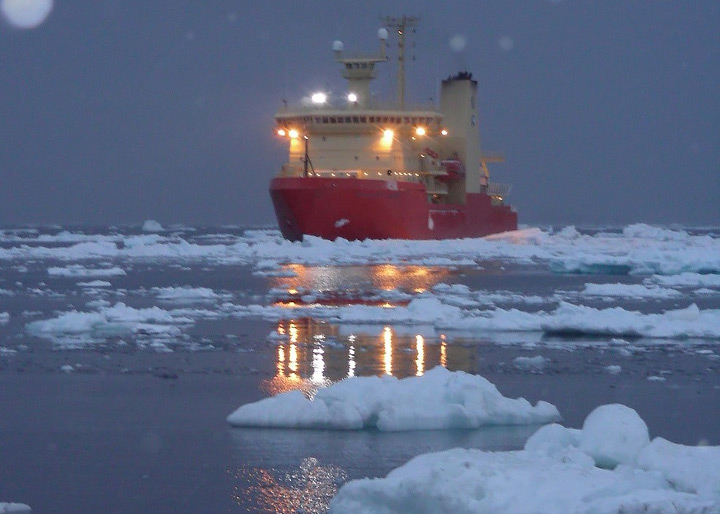UH-Led Work Will Help Coastal Regions Prepare for Climate Change
Researchers from the University of Houston will join colleagues from the United Kingdom and elsewhere in the United States to study the Thwaites Glacier, an Antarctic glacier long considered to be the "weak underbelly" of the ice sheet and capable of significant contributions to global sea-level rise. Thwaites melting already accounts for about 4 percent of global sea-level rise, an amount that is double that of a few decades ago.

The International Thwaites Glacier Collaboration is being launched to study the Thwaites Glacier and its possible future contributions to global sea level. The project, a joint initiative between the U.S. National Science Foundation (NSF) and the U.K. Natural Environmental Research Council (NERC), with funding totaling $25 million, includes eight individual projects and a scientific coordination office. Each project includes multiple partners.
Julia Wellner, a sedimentary geologist and assistant professor in the Department of Earth and Atmospheric Sciences at UH’s College of Natural Sciences and Mathematics, will lead one of the projects, THwaites Offshore Research (THOR).
As principal investigator for a $1 million, five-year grant from the NSF, Wellner and members of her lab will make two trips aboard icebreaking research vessels to collect sediment cores and perform geophysical profiling of the glacial deposits. Data from that work will be used by scientists modeling future ice behavior – melting – of the Thwaites Glacier.
“As communities around the world try to respond to global climate change, they can be better prepared if they know what changes are coming,” Wellner said. “While we know sea levels are rising, we don’t always know the rate and magnitude. Such information could help coastal regions around the world get ready for the future.”

Other participating U.S. universities in the THOR project are Rice University, the University of Alabama and the Lamont-Doherty Earth Observatory at Columbia University. Geophysicist Robert Larter with the British Antarctic Survey will lead the British side of the THOR project.
A report by the U.S. National Academy of Sciences, Engineering and Medicine singled out Thwaites Glacier as a “region of particular concern,” underscoring the NSF-NERC effort to improve the understanding of both recent and longer-term ice loss and sea-level rise originating from the glacier.
Thwaites is an enormous sheet of ice in deep water – portions extend two kilometers, or about 1.2 miles, beneath the ocean surface, making it especially vulnerable to a warming world. While the air temperature in Antarctica remains below freezing despite the warming trend, sea water is by definition above freezing. Raising water temperature even slightly can affect the stability of the ice, Wellner said.
“As warm currents impinge on the ice, it melts from underneath,” she said. That happens elsewhere, too, but the depth of the Thwaites Glacier means a larger area of ice is exposed to the warming water.
Satellite data offers information about glacial movement for the past few decades, but longer-term records are needed for the models to draw reliable conclusions about future ice melt and, therefore, how quickly and where sea levels will rise in the future.
Wellner and graduate students in her lab will collect sediment cores and analyze them to determine where ice was previously found and when it retreated. Linking that movement to past records of water temperatures will increase scientists’ understanding of what drove earlier changes in the ice, providing more information for use in predicting future changes.
- Jeannie Kever, University Media Relations